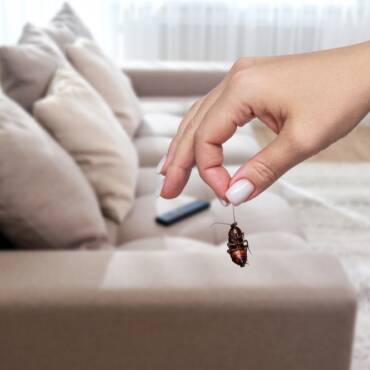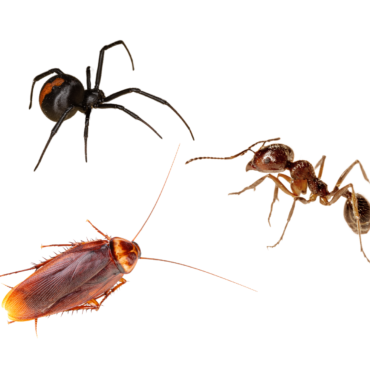Termites are among the most destructive pests in Australia, causing billions of dollars in property damage every year. The worst part? Most homeowners don’t realize they have termites until it’s too late. These silent destroyers chew through timber, flooring, and even structural beams without any obvious signs—until major repairs are needed.
If you’re asking, “How do I know if I have termites?”, this guide will give you everything you need to identify a termite infestation early, differentiate termites from ants, understand termite species in Australia, and find the best termite treatment options in 2025.
Common Signs of a Termite Infestation
Early detection is crucial. If you notice any of these warning signs, you may have termites in your home.
1. Hollow-Sounding or Damaged Wood
✔ Tap on walls, skirting boards, or furniture. If the wood sounds hollow or feels soft, termites may have eaten it from the inside.
✔ Wood that crumbles easily or has an unusual texture could also be infested.
2. Mud Tubes on Walls, Foundations, or Ceilings
✔ Subterranean termites build mud tunnels to stay moist while traveling between their colony and food sources.
✔ These pencil-sized tubes are often found on brick walls, concrete foundations, and wooden beams.
3. Discarded Wings Near Windows and Doors
✔ Swarming termites shed their wings after mating.
✔ If you find small, translucent wings indoors or near entry points, termites are likely nearby.
4. Warped or Sticking Doors and Windows
✔ As termites eat wood, the moisture they produce can cause doors and windows to warp.
✔ If doors and windows suddenly become harder to open or close, termites could be to blame.
5. Termite Droppings (Frass)
✔ Drywood termites leave tiny, wood-colored droppings (frass) that resemble sawdust or coffee grounds.
✔ Look for these near wooden furniture, baseboards, or window sills.
6. Clicking or Tapping Noises in Walls
✔ Soldier termites bang their heads against wood to signal danger to the colony.
✔ If you hear faint clicking or rustling sounds, termites may be actively feeding inside your walls.
7. Bubbling or Uneven Paint
✔ Termite tunnels beneath the surface can cause paint to bubble or appear uneven.
✔ This can be mistaken for water damage, so always investigate further.
What Do Termites Look Like? (Size, Color, and Identification)
Termites come in different sizes and colors depending on their species and role within the colony. Here’s how to identify them:
Worker Termites
✔ Size: 3-6 mm
✔ Color: Pale, creamy-white
✔ Appearance: Soft-bodied, straight antennae
✔ Role: Feeds on wood and nourishes the colony
Soldier Termites
✔ Size: 4-7 mm
✔ Color: Light-colored body, darker orange or brown head
✔ Appearance: Large mandibles for defense
✔ Role: Protects the colony from ants and predators
Flying Termites (Swarmers / Alates)
✔ Size: 8-15 mm (including wings)
✔ Color: Dark brown to black
✔ Appearance: Two pairs of equal-sized wings
✔ Role: Reproduces and forms new colonies
Termite Queen & King
✔ Size: Queen can grow up to 10 cm
✔ Color: Creamy-white with an enlarged abdomen
✔ Role: Lays thousands of eggs daily to sustain the colony
✅ Check termite images and termite pictures online to compare with any insects you’ve found in your home.
Termites vs. Ants: How to Tell the Difference
Many homeowners mistake flying termites for flying ants, leading to delayed pest control. Here’s how to tell them apart:
| Feature | Termites | Ants |
|---|---|---|
| Antennae | Straight | Bent or elbowed |
| Body Shape | Thick waist | Pinched, segmented waist |
| Wings | Equal-sized pairs | Unequal-sized pairs |
| Color | Creamy-white, brown, or black | Dark brown, red, or black |
✅ If you see winged insects swarming near light sources, check for discarded wings to confirm if they’re termites.
Termite Species in Australia (2025 Update)
Different termite species are found across Australia, with some being more destructive than others.
1. Subterranean Termites (Coptotermes & Schedorhinotermes)
✔ The most common and destructive termites in Sydney, Melbourne, Brisbane, and Perth
✔ Build underground nests and mud tunnels
✔ Can destroy homes in just 3-5 years
2. Drywood Termites (Cryptotermes spp.)
✔ Found in furniture, roof timber, and dry wood
✔ Leave termite droppings (frass) behind
✔ Common in Queensland and Northern Australia
3. Dampwood Termites (Mastotermes darwiniensis)
✔ Largest termite species in Australia
✔ Prefer decaying, moist wood
✔ Found in Darwin, Townsville, and Northern Australia
How to Get Rid of Termites in 2025 (Best Treatments)
If you suspect termites, act fast before the infestation worsens. Here are the most effective termite control methods:
1. Termite Barriers (Chemical & Physical)
✔ Liquid termiticides like Termidor create a protective barrier.
✔ Physical barriers (stainless steel mesh, crushed rock) can be installed during construction.
2. Termite Baiting Systems
✔ Bait stations like Sentricon and Exterra attract termites and eliminate colonies over time.
✔ Great for Sydney, Brisbane, and termite-prone areas.
3. Professional Termite Inspection
✔ Experts use thermal imaging and moisture meters to detect termites.
✔ Annual termite inspections can catch infestations early.
4. DIY Termite Treatment: Does It Work?
🚫 DIY termite sprays and home remedies rarely eliminate entire colonies.
🚫 Without expert treatment, termites will continue causing damage.
How to Prevent Termites from Invading Your Home
✔ Eliminate moisture – Fix leaks, ensure proper drainage, and use dehumidifiers.
✔ Remove wood-to-soil contact – Keep garden beds and firewood away from your home.
✔ Use termite-resistant materials – Consider treated timber and termite barriers.
✔ Schedule regular inspections – Experts recommend termite checks every 6-12 months.
Frequently Asked Questions (FAQs) About Termites
1. How long does it take for termites to destroy a house?
A large colony can cause major structural damage within 3-5 years.
2. What kills termites instantly?
Direct applications of Termidor Foam or professional-grade termiticides work fastest.
3. Can I treat termites myself?
DIY methods rarely work. Professional pest control is the most effective solution.
4. What color are termites?
Most termites are creamy-white, light brown, or dark brown, depending on their species.
5. Are termites worse in certain Australian cities?
Yes. High-risk areas include Sydney, Brisbane, Melbourne, Perth, and Darwin.
Final Thoughts
Now that you know how to tell if you have termites, don’t wait until it’s too late. Schedule a professional termite inspection to protect your home from costly damage.
For expert termite control in Sydney, Brisbane, Melbourne, and across Australia, visit RapidKil Pest Control today! 🚫🐜




